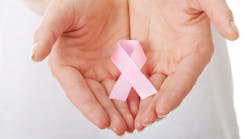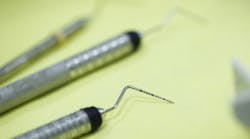Survey says:
By Mark Hartley,
Editor, RDH magazine
Although most dental hygienists are bilingual or willing to learn a second language, there is still a need to develop communication strategies in the 79% of offices where language barriers exist, according to a survey conducted by RDH eVillage in November 2008.
The survey indicated that in 66% of dental practices, "almost all" patients speak English as their primary language. Nevertheless, 79% said they have been in a "dental hygiene work setting where there was a language barrier." Sixty-seven percent said they treat patients who require an interpreter during consultations or appointments.
Be sure to participate in this month's survey too! We are asking how you feel about social networking sites such as Facebook and MySpace. Click here to participate.
However, 59% said they lack the resources to offer materials, such as patient education brochures, medical history forms, or post-care instructions, that are printed in languages other than English.
Sixty-two percent of the 230 hygienists participating in the RDH eVillage survey indicated they are bilingual. Of the remainder, 81% said they would "consider learning another language (Spanish would be the choice of 73%) to facilitate communication if the patient demographics" change.
Only 7% chose the response, "It is my belief that English should be the official language and that patients should learn it."
One reader wrote, "It is very difficult. I feel that every person should be able to understand English to some degree if they are going to live in the United States. It should be mandatory for them to go to school and learn the language in the country in which they are residing. That is what my parents had to do when they moved to the United States.
"We should not offer the availability to 'Press 1 for English, press 2 for Spanish, press 3 for Polish, etc.' Learn the language in order to communicate in the country you choose to live in."
But for the most part, dental hygienists try to communicate to non-English-speaking patients. For example, "[drawing] pictures" was a common solution to language barriers.
But one hygienist said she was "learning some very basic Japanese words, remembering to speak more slowly and clearly, and avoiding the use of slang words."
Another RDH eVillage reader wrote, "I have memorized statements in Spanish that help me give home-care instructions and make requests. I can also get by in French."
As far as the language adaptability of the dental hygiene profession goes, the survey indicated:
• 72% of the dental hygienists speak Spanish
• 10% speak German
• 9% speak French
• 7% speak Italian
• 6% speak Russian
• 4% speak Japanese
• 3% speak Bengali/Hindi
• 3% speak Portuguese
• 2% speak Mandarin Chinese
• 2% speak Vietnamese
• 2% speak Persian
• Less than 1% speaks Arabic
Most of the hygienists said they obtain their non-English literature for dissemination to patients from sources such as CAESY, Procter & Gamble (Crest/Oral-B), Colgate, or the American Dental Association.
But one enterprising bilingual hygienist wrote, "I am the dental hygienist in the office and I am able to speak Spanish. Upon hire, I translated all medical history, post-op instructions, and various other documents into Spanish."
The hygienist added, "I continue daily to urge my doctor to hire a front office person who speaks Spanish to facilitate phone calls and answer new patient questions."
The RDH eVillage survey also asked who served as interpreter when language barriers became evident. Children (41%) or parents (17%) of patients are commonly used as interpreters. But the most common answer (50%) was "other family relative." Other resources were English-speaking friends of the patient (23%) and dental office co-workers (49%).
A hygienist who is not bilingual wrote, "I have learned several Spanish dental terms and have copies of printed words and phrases that I can have my patients read."
Finally, one hygienist offered this idea: "Volunteer for an English-as-a-second-language class. That way, you'll be helping others and they'll be helping you."

